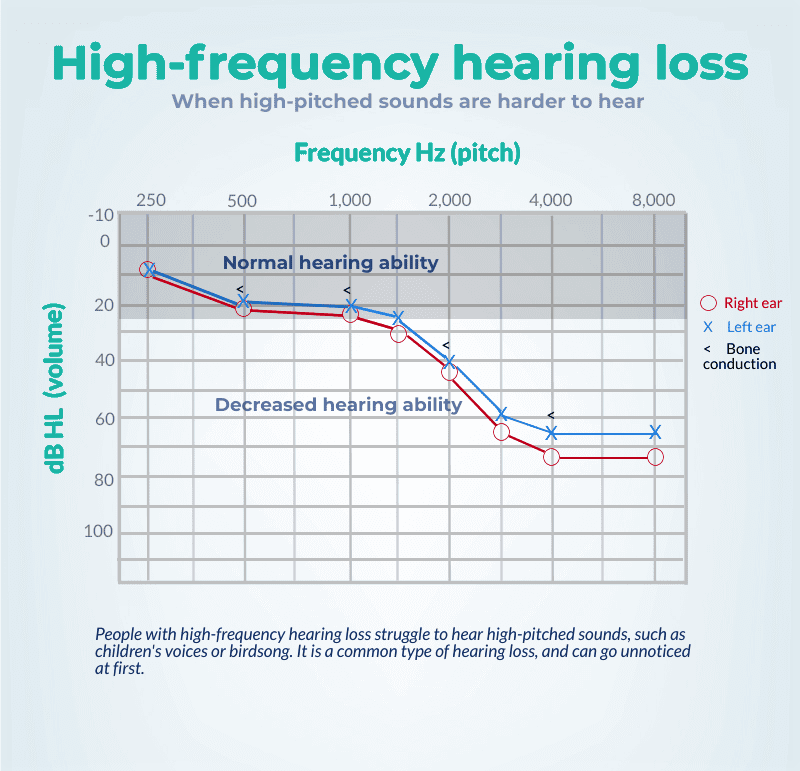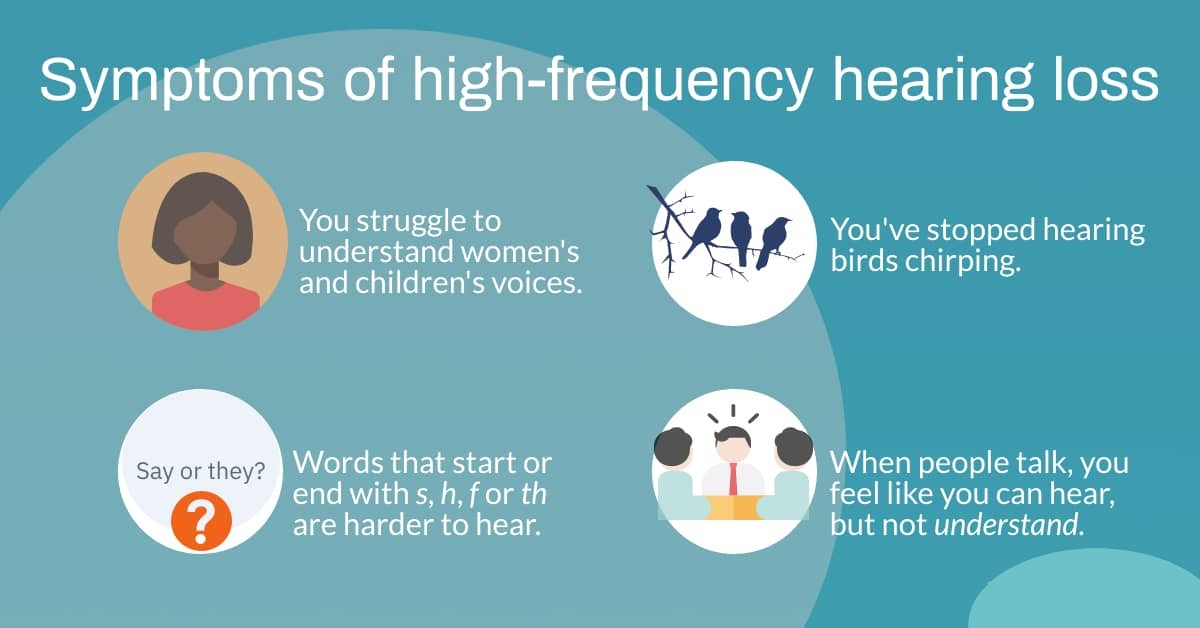What’s the number one complaint hearing care professionals hear from their new patients with hearing loss? Ask them and they’ll likely say it’s, “I can hear, but I can’t understand.” If this is what you’re experiencing, you may have hearing loss.
Hearing loss involves not only the ears, but also the brain where sound is translated into meaningful words. Symptoms vary between people. Hearing loss comes in all degrees from mild to profound.
But most people, especially older adults, have mild-to-moderate hearing loss, especially the type that makes it harder to hear high-pitched sounds. In this case, the chief symptom may be difficulty with word understanding, especially in noisy situations.
High frequency hearing loss causes problems with hearing high-pitched sounds. It can also lead to problems understanding fast speech. Damage to the hair-like structures in your inner ear can cause this specific type of hearing loss.
Frequency is a measure of the number of vibrations a sound wave makes per second. For example, a sound measured at 4,000 Hz vibrates 4,000 times per second. The frequency, which is the pitch of a sound, is different from the intensity, which is how loud a sound feels.
For example, the note middle C on a keyboard has a frequency of roughly just below 262 Hz. If you lightly tap the key, you can produce a sound with a low intensity that’s barely audible. If you hit the key harder, you can produce a much louder sound at the same pitch.
Anybody can develop high frequency hearing loss, but it becomes more common with age. Exposure to loud sounds or high frequency sounds are common causes of ear damage in younger people.
In this article, we’re going to take a look at the symptoms and causes of high frequency hearing loss. We’ll also tell you how you can take steps to protect your ears.
Diagnosing high-frequency hearing loss
Diagnosis of high-frequency hearing loss is made after a hearing test in a sound-treated booth at a hearing clinic. A hearing instrument specialist or audiologist usually will conduct the test. The results are plotted on an audiogram. If a person has high-frequency hearing loss, your audiogram will show a slope to the right, indicating a person has trouble hearing frequencies between 2,000 and 8,000 Hz.
A person may have mild, moderate, moderately severe, severe or profound hearing loss. (See degrees of hearing loss to learn hearing loss severity is measured.) In the example below, the person has moderately severe high-frequency hearing loss that is slightly worse in the right ear.

Is it permanent?
Hearing loss is extremely common in the United States. Roughly 22 million people are exposed to dangerous levels of noise at work. Once the structures in your inner ear are damaged, it often isn’t possible to reverse hearing loss.
Hearing damage can either be classified as sensorineural hearing loss, conductive hearing loss, or a combination of the two.
Sensorineural hearing loss is the more common type. It occurs when your auditory nerve or the hair cells inside your inner ear’s cochlea become damaged. Sensorineural hearing loss is usually permanent but may be improved with hearing aids or cochlear implants.
Conductive hearing loss is less common. This type of hearing loss involves a blockage or damage to your middle ear or outer ear structures. It may be caused by built-up ear wax or a broken ear bone. In some cases, this type of hearing loss may be reversible.
If you have hearing loss, you should visit a doctor to get a proper diagnosis.
Hearing vs. understanding
When your hearing is tested, the results are plotted on an audiogram. People with high-frequency hearing loss are said to have a “sloping” hearing loss. If you have a sloping hearing loss, it means you are able to hear low-pitched sounds (such as thunder), sometimes even as clearly as someone with normal hearing. But, high-pitched sounds (such as children’s voices) need to be much louder before you can hear them.

|

